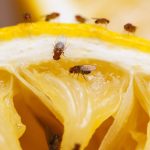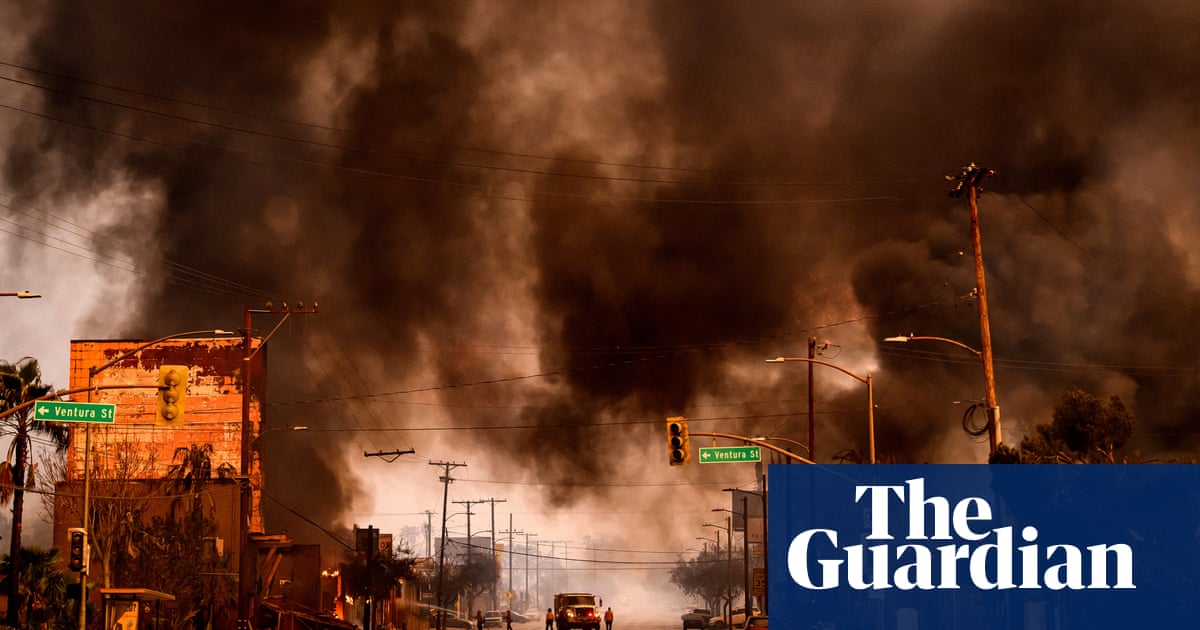Wildfires burning across the Los Angeles area have left 11 dead, thousands displaced, and over 10,000 structures destroyed. As authorities struggle to contain the blazes, the Centers for Disease Control and Prevention (CDC) has urged those in the area to monitor the local air quality on their weather app, or on airnow.gov.
Wildfire smoke, a major source of air pollution, is linked to severe health issues including heart attacks, strokes and lung diseases like asthma.
There is also a nascent body of research on their mental health effects, which is beginning to reveal some connections that can help us better understand how these complex interactions impact our wellbeing, and inform potential solutions.
How does wildfire smoke affect the brain?
Air pollution affects our brain health and cognitive function. Researchers have found the fine particulate matter (PM2.5) pollution released by wildfires is even more toxic than air pollution from other sources. One possible reason is the high level of polycyclic aromatic hydrocarbons (PAHs) mixed with various levels of other known neurotoxic particles that can be found in smoke, including heavy metals. These particles can reach the brain via the olfactory nerve and pass through the blood–brain barrier, or modulate the nervous system, leading to brain inflammation and oxidative stress.
Can wildfire smoke affect cognitive function?
Neuroinflammation caused by wildfire smoke increases the risk of developing Alzheimer’s, dementia and Parkinson’s disease. Recent research from the Universities of Washington and Pennsylvania found that the odds of a new dementia diagnosis increased about 21% for every 1 microgram increase in the concentration of wildfire particles a person inhales, compared with a 3% increased risk for every 3 microgram jump in non-wildfire particles.
Additional research from the University of New Mexico suggests that sudden increases in air pollution, as occur during wildfires, create surges of inflammation in the hippocampus region of the brain, responsible for memory and learning. These can linger for over a month after exposure.
That may explain why, in addition to several studies finding a correlation between smoke exposure and poorer concentration and decision making skills while playing digital games and sports, smoky days also appear linked to poorer academic performance.
In a 2020 study, UC San Diego economist and researcher Josh Graff Zivin examined how smoky air affected students taking China’s national college entrance exam over a six year period. Graff Zivin specifically studied smoke created by routine, controlled agricultural fires, removing potential anxiety related to possible evacuations as a factor from the study.
His team found that when there was a significant increase in fires upwind compared to downwind during the exam, students’ total scores dropped by 0.6 points on average. This decrease in scores also slightly reduced students’ likelihood of getting into top-tier universities. A US study from 2022 estimated that smoke exposure in 2016 reduced students’ future earnings by nearly $1.7bn (or $111 per student).
“We don’t exactly know what’s happening to the brain” during heavy smoke days, says Graff Zivin. “But we know it’s bad.”
The cardiovascular effects of smoke inhalation may affect our body’s ability to properly oxygenate our brains. “Just having impaired lung function could lead to cognitive impairment,” he says.
But more research is required to fully understand the extent to which smoky days affect cognitive performance. Nor do we yet fully understand the cumulative impact of being exposed to smoke for weeks or months each year, Graff Zivin adds.
What’s the relationship between smoky days and depression?
It’s not exactly clear how smoke may physiologically impact the brain in ways that contribute to feelings of depression, but researchers believe cognitive impairment – like that which Graff Zivin observed among test-taking students – can be a factor in low mood. Researchers also increasingly believe brain inflammation plays a role in producing depression, raising the possibility that brain inflammation triggered by wildfire smoke could contribute to mood disorders.
The stress and trauma of a wildfire event can also affect mental health. UC San Diego School of Medicine neuroscientist Dr Jyoti Mishra studied people both directly and indirectly exposed to 2018’s Camp fire, one year after it tore through Butte county, California. Perhaps unsurprisingly, she found that those who faced significant personal loss or trauma during the fires exhibited the highest levels of PTSD, anxiety and depression. Yet even community members who were not directly impacted by the fire reported increased neurocognitive issues, and struggled with depression and anxiety.
after newsletter promotion
Some of the dread people living close to wildfires feel is related to “seeing landscapes change, environments change, and worrying about both the present and the future,” says Dr Warren Dodd, an associate professor in the School of Public Health Sciences at the University of Waterloo.
Dodd has interviewed residents of Canada’s Northwest Territories who experienced what was, in 2014, a record fire season. They reported feelings of anger, stress and hopelessness about the threats posed by climate change.
In addition to the distress of witnessing one’s environment change rapidly – also known as solastalgia – the people Dodd interviewed reported that stopping their summertime outdoor and land-based activities to shelter indoors had negative consequences for their mental health.
What can we do about the mental health effects of wildfires?
Curtailing the physiological effects of wildfire smoke on our brains involves many of the same behaviors as protecting the rest of our bodies from air pollution: using an air purifier indoors, thoroughly cleaning living spaces to remove particulate matter that gets inside, wearing a mask outdoors and minimizing unnecessary time spent outside.
When it comes to mitigating the psychological harms of smoky days, local authorities can spring into action. Making community resources available for free during wildfires is one way to help people alleviate some of the isolation and anxiety felt when sheltering indoors. For instance, Dodd notes that the city of Yellowknife waived fees for its indoor recreation center during the fire, allowing people to get some exercise and see their neighbors without having to be outside.
Resilience is important for communities to focus on, says Mishra – not just after a climate disaster, but also preemptively. “When we studied the Camp fire folks, we found that there are certainly some traits, such as greater mindfulness and better physical activity that can contribute to a sense of resilience,” she says. But the strength of people’s family and social connections were also a significant factor in their resilience.
People who “feel supported and like there’s a sense of community around you are best protected in terms of their mental health outcomes”, she says. A stronger sense of community can be an antidote for loneliness and a tool for climate resilience, Mishra notes. For those experiencing PTSD, therapy for underlying neurocognitive issues can assist with recovery.
As ever, prevention is key: reducing greenhouse gas emissions can slow global warming and help curb forest fires and their devastating, complex consequences.
Graff Zivin believes that governments must bear in mind the economic repercussions of diminished productivity and cognitive function, and invest more heavily in wildfire prevention and forest health. A healthy forest maintained with prescribed burns can lead to less intense wildfires, he says. “We rarely talk about the value of having healthy forests.”












